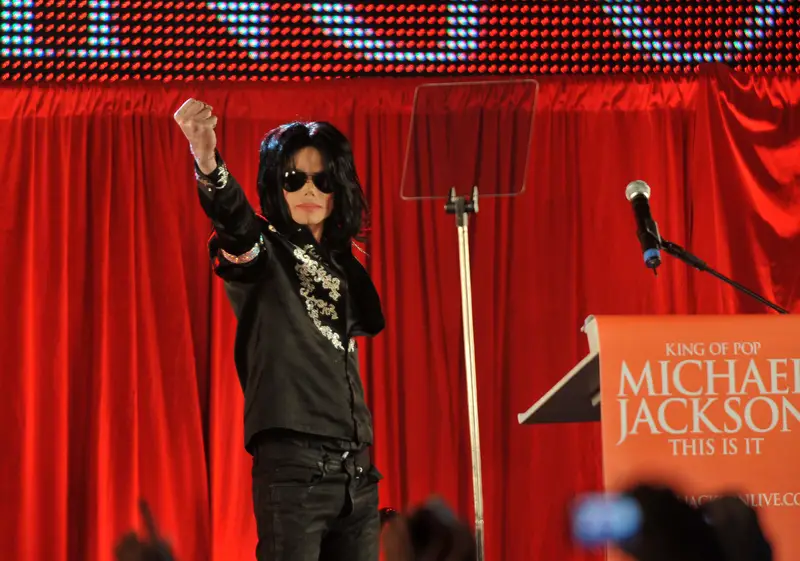When Michael Jackson died in 2009, most people assumed the King of Pop left behind a massive fortune. After all, he’d sold over 350 million albums worldwide and commanded astronomical fees for concerts and endorsements. The shocking reality? Jackson died with more debt than assets, leaving his estate in financial chaos. His spending habits, legal battles, and business decisions created a perfect storm that wiped out what should have been generational wealth.
Neverland Ranch was bleeding money every month
Jackson’s 2,700-acre Neverland Ranch wasn’t just a home – it was a theme park that cost millions to maintain. The property featured a zoo, amusement park rides, a movie theater, and a full-time staff of dozens. Monthly operating costs reportedly reached $10 million annually, including salaries for caretakers, groundskeepers, and animal handlers. The ranch required constant upkeep for its exotic animals, carnival rides, and elaborate landscaping.
Jackson borrowed heavily against Neverland to fund his lifestyle and other ventures. By 2008, he owed $24.5 million on the property and faced foreclosure. The ranch, which he purchased for $19.5 million in 1987, became a financial albatross that drained his resources for decades. Instead of selling when he could have profited, Jackson held onto the property despite mounting costs and declining revenue from his music career.
Legal settlements cost him hundreds of millions
Jackson’s legal troubles created massive financial drains that continued for years. The most significant was his 1993 settlement with the Chandler family, which reportedly cost him between $15-25 million. This was followed by additional settlements and legal fees that mounted into the hundreds of millions over his career. Each case required expensive legal representation and often resulted in confidential payouts that weren’t publicly disclosed.
The 2005 criminal trial alone cost Jackson an estimated $30 million in legal fees, even though he was acquitted. His legal team included some of the most expensive attorneys in the country, and the lengthy trial process meant months of mounting bills. These legal expenses came at a time when Jackson’s earning power had already declined significantly, forcing him to borrow against future earnings and assets to cover immediate costs.
His spending habits were completely out of control
Jackson’s daily spending reached astronomical levels that would have bankrupted most billionaires. He regularly spent $30 million annually on personal expenses, including a $1 million monthly credit card bill. His shopping sprees were legendary – he once spent $6 million in a single trip to a Las Vegas art dealer. Jackson bought entire stores’ worth of merchandise, often purchasing items he never used or even unpacked.
His entourage and lifestyle maintenance costs spiraled beyond reason. Jackson employed a massive staff including personal chefs, security guards, nannies, and assistants who traveled with him globally. He stayed in the most expensive hotel suites, often renting entire floors for his family and staff. Private jet flights, luxury car rentals, and extravagant gifts for friends and family became routine expenses that few entertainers could sustain long-term.
Bad business deals destroyed his wealth systematically
Jackson made several catastrophic business decisions that eroded his financial foundation. He sold his share of the Beatles catalog publishing rights, which generated millions in annual royalties, to help fund his lifestyle and pay debts. This decision alone cost him tens of millions in future earnings. He also invested heavily in failed ventures, including theme park concepts and movie productions that never materialized.
His business managers and advisors often had conflicting interests, leading to poor investment choices and excessive fees. Jackson frequently changed financial advisors, creating instability in his long-term planning. Some advisors reportedly charged excessive fees while failing to control his spending or structure his finances properly. The lack of consistent financial oversight allowed problems to compound over years without effective intervention.
Prescription drug costs mounted into millions annually
Jackson’s prescription drug dependency created enormous hidden costs beyond the obvious health consequences. His medical expenses reportedly reached several million dollars annually, including private doctors, specialized treatments, and pharmaceutical costs. He employed personal physicians who traveled with him and maintained multiple medical facilities at his properties. These arrangements were extraordinarily expensive and often involved non-standard medical practices.
The financial impact extended beyond direct medical costs to include liability insurance, security for medical staff, and specialized equipment. Jackson’s medical needs required constant monitoring and expensive interventions that weren’t covered by standard insurance policies. His dependence on prescription medications also affected his ability to work consistently, reducing his earning potential while medical expenses continued to accumulate.
Concert cancellations wiped out guaranteed income
Jackson’s later career was marked by cancelled concerts and tours that cost him millions in guaranteed income. His planned comeback concerts in London were projected to earn him over $100 million, but his death meant those revenues never materialized. Previous tour cancellations had already damaged his reputation with promoters and reduced his earning potential significantly. Each cancelled show resulted in refunded tickets, penalties, and lost merchandise sales.
The financial penalties for cancelled performances were often severe, including lawsuit settlements and damaged relationships with venues and promoters. Jackson’s unreliability made it difficult to secure future bookings and often required him to accept lower fees or unfavorable contract terms. His physical and mental health issues made it increasingly difficult to maintain the demanding schedule required for major concert tours, creating a cycle of declining income and mounting expenses.
He borrowed against future earnings repeatedly
Jackson’s financial strategy relied heavily on borrowing against his future earning potential, creating unsustainable debt levels. He used his music catalog and other assets as collateral for loans that funded his immediate expenses. This approach worked when his earning power was high, but became problematic as his income declined and interest payments accumulated. The debt service on these loans eventually exceeded his actual income.
By 2009, Jackson owed an estimated $400-500 million to various creditors, with interest rates that made repayment nearly impossible. His loans were often structured with variable rates and balloon payments that assumed continued high earnings. When his income dropped due to reduced touring and album sales, these debt obligations became unmanageable. The compound interest on unpaid balances meant his debt grew faster than his ability to pay it down.
Poor investment choices lost him millions
Jackson’s investment portfolio was filled with speculative ventures that failed to generate returns. He invested heavily in technology companies during the dot-com boom, losing millions when the bubble burst. His real estate investments, beyond Neverland, often involved properties that required extensive renovation and maintenance without generating rental income. Many of his investments were based on personal interests rather than sound financial analysis.
His art collection, while valuable, was illiquid and didn’t generate income to offset his expenses. Jackson purchased expensive artwork and collectibles that appreciated slowly, if at all, while his debt accumulated at much higher rates. The lack of diversification in his investments meant that when several ventures failed simultaneously, there were no profitable investments to offset the losses. His investment strategy prioritized passion projects over financial returns.
Tax problems created additional massive debts
Jackson’s complex financial situation led to significant tax issues that compounded his debt problems. He owed millions in back taxes to multiple jurisdictions, with penalties and interest that continued to accumulate. His international earnings and complex business structure made tax compliance difficult and expensive. Professional tax preparation and legal representation for tax disputes added millions more in professional fees.
The IRS and other tax authorities placed liens on his assets, limiting his ability to sell or refinance properties to raise cash. Tax debts typically cannot be discharged in bankruptcy, making them particularly problematic for someone with Jackson’s financial difficulties. His tax obligations required immediate cash payments while his assets were largely illiquid, creating a cash flow crisis that persisted until his death. The estate continued to face tax disputes for years after his passing.
Michael Jackson’s financial downfall serves as a stark reminder that even massive earning power can’t overcome poor money management and excessive spending. His estate has since become profitable through careful management and the continued popularity of his music, but Jackson himself never lived to see financial recovery. The lesson here isn’t just about celebrity excess – it’s about how quickly wealth can disappear when spending exceeds income, regardless of how much money someone makes.

